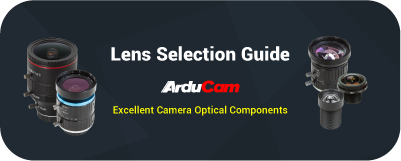Introduction
The FOV(Field of View) is a measure used in optics and imaging to describe the extent of the observable world that can be seen at any given moment through a lens or optical system. The field of view is typically expressed in degrees and includes HFOV(Horizontal Field of View), VFOV(Vertical Field of View), and DFOV(Diagonal Field of View).
In the context of cameras and photography, the field of view refers to the area that the camera’s lens can capture in a single frame. A wider field of view captures more of the scene, while a narrower field of view focuses on a smaller portion of the scene. It is an important consideration in choosing lenses and camera systems, as it directly influences what will be included in the photograph or video.
The field of view is influenced by factors such as the focal length of the lens, the sensor size, and the distance between the lens and the subject. It plays a crucial role in determining how much of the surrounding environment will be visible in the final image or video.
If you need to get more detailed information about Lens Selection and Lens parameters, please refer to the Lens Selection Guide page.
Lens FOV Calculator
About Lens FOV Calculators
These Lens FOV(Field of View) Calculators are able to calculate multiple optical parameters in multiple dimensions to help you evaluate different optical imaging needs. The calculator currently includes three parts:
Calculator Section – 1
About Calculator Section – 1
This calculator is used to calculate the FOV(field of view) of an optical imaging system with given parameters. In this section, you need to fill in the Number of Horizontal Pixels, the Number of Vertical Pixels, the Pixel Size(μm) of the sensor, and the Lens EFL(effective focal length).
We will calculate the HFOV(horizontal field of view), VFOV(vertical field of view), and DFOV(diagonal field of view) of the imaging system.
Note:
- Due to the complexity of the optical system, the following calculated values are approximate and may differ from the actual effect.
- This FOV Calculator is mainly based on the elemental parameters of the optical Lens without considering the Distortion.
Lens Calculator - 1
Calculator Section – 2
About Calculator Section – 2
This calculator calculates the minimum FOV required for imaging by using the Working Distance (the distance from the lens to the object) and the actual size of the object (including the Horizontal Size and Vertical Sizes of the object).
Note:
1. Due to the complexity of the optical system, the following calculated values are approximate and may differ from the actual effect.
2. When the size of the object is large enough, you may need a wide-angle lens. The larger the angle, the greater the distortion effect.
Lens Calculator - 2
Results
Calculator Section – 3
About Calculator Section – 3
This calculator is applied for calculating the maximum field of view (in length units) that an imaging system can capture under specific conditions using the sensor’s physical size (including horizontal, vertical, and diagonal dimensions), Working Distance (lens end to object end), and Lens EFL (effective focal length of the lens).
Note:
1. To accurately calculate the sensor’s physical size, you need to enter the Number of Horizontal Pixels, Number of Vertical Pixels, and Pixel Size (in microns).
2. Some ultra-wide-angle lenses own a field of view of more than 180°, in which case the field of view range will be infinite (for example, when the lens focal length is very small and the sensor size is relatively small)
3.Due to the complexity of the optical system, the following calculated values are approximate and may differ from the actual effect.
Lens Calculator-3
Additional Resources
Lens Selection Guide
If you require more specific camera Lenses that are on sale.
You can refer to the following Lens Selection Guide for your choice.
Camera Selection Guide
For the full classification of the camera module, please refer to the
following Arducam Camera Selection Guide for More detail.




